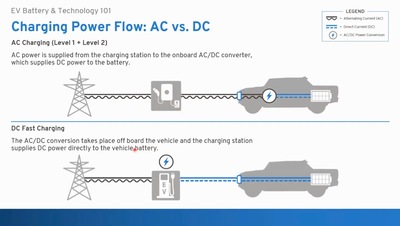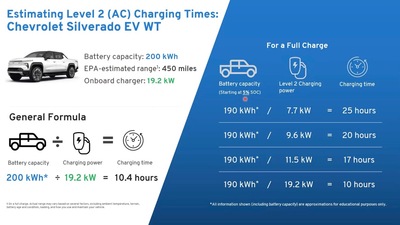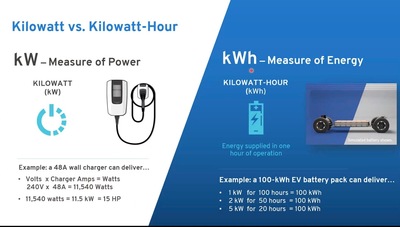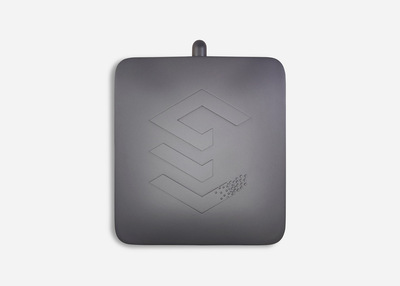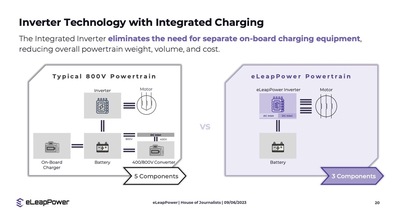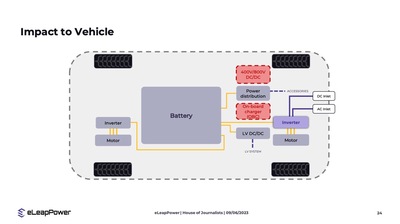Plug In, Drive Over, Drive Away — Better Strategies for EVs
By Thom Cannell
Senior Editor,Technology
Michigan Bureau
The Auto Channel
CES 2024, Las Vegas January 2024; You car, truck or SUV, runs on fuel—which may be liquid, gaseous or electrons. In every case, how you access the fuel; from a local filling station, a specialized hydrogen, propane or natural gas facility, or plugging into the grid affects time to fuel. There’s also the question of how that fuel is used, and mostly it is combusted. Leaving aside fuel cells, energy for EVs—electric vehicles, arrives on a wire connected to your vehicle. What then happens is often misunderstood and very open to innovation, as we’ll see.
First, the standard method of getting the household alternating current (120-volt or 220- volt AC) into your vehicle requires several conversions, first to direct current (DC) for the battery and back to AC to run motors. GM’s Andy Ouray outlined the process in a seminar hosted by the Midwest Automotive Media Association.
“The grid is AC, everywhere in the world,” Andy commented, “but batteries are DC and we have to make (the grid and batteries) talk to each other.” Making the conversion is important. Level 1 (L1) is the familiar wall plug for your vacuum, coffee maker or EV and will take over night to two days to fully charge most EVs. Level 2 requires 240-volts, like your electric dryer, stove, or air conditioner. When you shop for a Level 2 charger at Amazon, car dealer or elsewhere, you’re really buying an EVSE or electric vehicle support equipment device which negotiates available electricity for your vehicle and then into the onboard charging module. That module rectifies the AC into DC, and into the battery for storage and use.
So, what’s DC fast charging, the type you hope can “refill” your battery in 15-20 minutes? Those devices (sort of) bypass the onboard conversion and deliver proper current directly to the battery system at its preferred voltage and current. (You should know, and understand that kilowatts are power, like horsepower and you interchange those numbers as Europeans and Asians typically rate engines and motors in kilowatts (kW). Thus, kWh or kilowatt hours are measures of energy (power over a length of time), so a 100 kWh battery pack could deliver 10 KW of power for 10 hours. This does affect what L2 home device you may install.
While chargers on the wall are typical at home, there’s another option, inductive chargers. Like the pad you slap you watch, earbuds or mobile phone onto, inductive charger devices push electrons into your battery with no physical connection. Cool, eh? And various manufacturers promise significant cost savings for manufacturers, fleets and vehicle owners.
Earlier this year, at IAA in Munich, Germany we spoke to a Canadian company, eLeapPower, about some innovative devices they produce, including an inductive charger. The charger is theoretically simple, just park reasonably close to a sealed charging pad and Boom! charging begins without you doing anything. For fleets, particularly last-mile delivery, it’s a no-brainer thanks to no dangling wires, pole or wall chargers, and requires less space. Living in Michigan’s rains, sleet and snow I find the idea particularly appealing…
But eLeapPower offers more, much more. Remember those on-board charging systems that each vehicle now requires? They’re not only expensive but heavy and use silicon chips that are in short supply. The company says it has banished separate assemblies, shared cooling systems and duplicate charger/inverters. Their integrated inverter eliminates the separate on-board charging equipment, they say.
Currently, when you put your foot on the accelerator of any EV, an inverter changes battery DC current into AC current to run motors. Lift off the “gas” and regenerative braking uses inverters to push energy from the motor (AC) back to the battery (DC). It works spectacularly well . But getting energy from the grid into the system requires specific inverters for fast charging (400V-800V DC-only) systems along the road, and an onboard charger for lower, 120-240V AC charging at home (L1-L2).
eLeapPower says their technology does away with both the 400V/800V DC/DC and onboard charger, substituting only their inverter, which does it all.
Photo “Why hasn’t anyone else done this?” The company says its impact extends to a projected weight saving of 21 kg, space saving of 17 liters (a 5-gallon water bottle) and probable $2000 savings.




